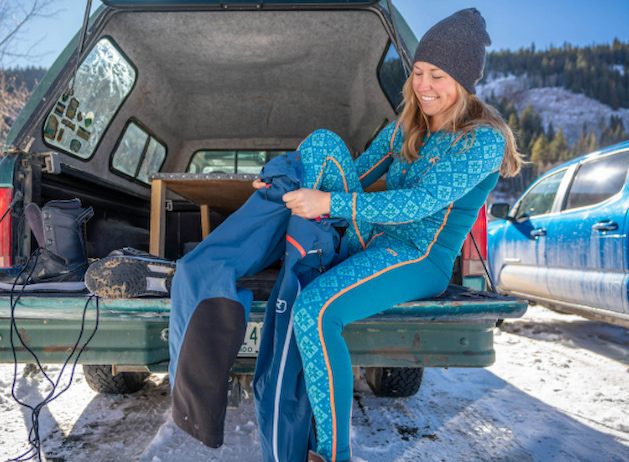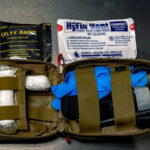When winter hits and temperatures plummet, there’s nothing worse than layering up only to end up freezing, sweating, or feeling like the Michelin woman. The secret to staying warm without bulk isn’t just piling on jackets. It starts with the right foundation: the women’s baselayer. This critical first layer sets the tone for your entire outfit’s performance, working quietly but powerfully to regulate temperature, wick moisture and keep you comfortable through every adventure.
The Critical First Layer
So, what exactly is a baselayer, and how does it differ from a regular shirt? A baselayer is the garment worn directly against your skin. Think of it as your second skin. Its primary purpose is to manage moisture and provide insulation. While a standard cotton T-shirt soaks up sweat, a well-designed baselayer for women pulls moisture away from the skin and allows it to evaporate, ensuring you stay dry and warm even when you’re working hard.
A warm women’s baselayer has two essential jobs: moisture management and insulation. Moisture management keeps you from feeling clammy and chilled after exertion, while insulation traps warm air close to your body. The right balance between these two depends on the material and the activity you’re doing, whether it’s skiing, hiking, or running errands on a cold day.
Women-Specific Styles and Fit
Baselayers aren’t one-size-fits-all, and women’s designs have evolved significantly to combine performance with comfort and style. There are different:
- Tops: You’ll find two main types – crew neck and zip-neck. Crew necks are classic and great for layering under sweaters or fleeces, while zip-necks allow for adjustable ventilation. If you’re overheating during a climb or a ski session, a quick zip-down lets in fresh air without needing to remove other layers.
- Bottoms: Full-length leggings are the go-to choice for all-around warmth, perfect under snow pants or joggers. However, three-quarters-length styles are ideal for pairing with ski or tall hiking boots. They prevent the bunching that can cause discomfort or pressure points.
- Flatlock Stitching: Pay attention to the seams. Flatlock stitching ensures a smooth finish that won’t rub or chafe against your skin during movement. An important detail for long treks or high-intensity activities.
Fit is everything when it comes to women’s thermals. Your baselayer should hug the body snugly, not tightly. A close fit ensures efficient wicking, pulling moisture away from your skin through capillary action. A loose or restrictive fit can cause issues: too loose, and moisture won’t transfer properly; too tight, and your range of motion suffers.
Why the First Layer Matters Most
It’s easy to underestimate the importance of the first layer, but in cold environments, it’s arguably the most crucial. Here’s why:
Wicking Explained: Wicking refers to how fabric moves moisture away from your skin to the surface of the garment, where it can evaporate. This process keeps your body dry, minimizing the chilling effect that comes when sweat cools on your skin.
Avoiding the Chill: Cotton may feel soft, but in the world of outdoor performance, it’s your worst enemy. It absorbs moisture, holds onto it and when that moisture cools, so do you. This is the reason behind the popular saying “cotton kills” among seasoned adventurers.
Thermoregulation: A good baselayer helps your body maintain a steady temperature. It keeps you warm during rest periods and prevents overheating during activity. That balance between breathability and insulation is what separates true technical thermals for women from basic undergarments.
To complete your winter system, remember the three-layer principle:
- Base Layer (Wick): The moisture manager.
- Mid Layer (Insulate): Traps heat.
- Shell Layer (Protect): Shields from wind and moisture.
Sizing, Fit & Maintenance Tips

Choosing the perfect women’s baselayers goes beyond just size. The cut, stretch, and length all influence comfort and performance. For optimal wicking and warmth, your baselayer should feel like a second skin. Close-fitting but not restrictive. A proper fit ensures the fabric can do its job effectively by maintaining contact with your skin, allowing sweat to be transported outward rather than pooling underneath.
How to Care for Your Investment
- Washing Wool: Merino wool baselayers are naturally odour-resistant and temperature-regulating, but they need gentle care. Use a mild or wool-specific detergent, wash on a cold cycle and air dry to maintain softness and longevity.
- Washing Synthetics: Synthetic options are durable and fast-drying but sensitive to additives. Never use fabric softener. It coats the fibres, blocking their ability to wick moisture.
- Storage: Roll rather than fold your base layers to prevent stretching and creases. This small habit keeps your gear ready for action and looking new longer.
Materials Matter Most
Merino wool is soft, naturally antibacterial and excellent at regulating body temperature. It keeps you warm when it’s cold and cool when it’s warm. A true all-rounder for variable conditions. Synthetic fabrics are great for high-intensity activities where breathability and quick drying are key. These are durable, affordable and ideal for layering in wet or unpredictable weather.
Blends combine the best of both worlds. Synthetic durability with the comfort and odour resistance of wool. Matching the weight of your baselayer to your activity level is equally important: lightweight for high output, midweight for general winter use and heavyweight for extreme cold or low-activity conditions.
The Smart Choice for Staying Dry and Warm
A high-quality baselayer isn’t just another piece of clothing. It’s an investment in warmth, comfort and confidence. It’s what keeps you dry on a snowshoe trail, cosy on a chilly morning hike or comfortable during après-ski. When chosen correctly, it helps you stay focused on your adventure instead of worrying about the cold.
Ultimately, the smartest choice for your winter wardrobe begins with the layer closest to your skin. Whether you prefer natural fibres like merino or the high-tech performance of synthetics, the right women’s baselayer is your first line of defence against winter’s bite. Choose wisely, care for it properly, and enjoy every frosty moment outdoors.


